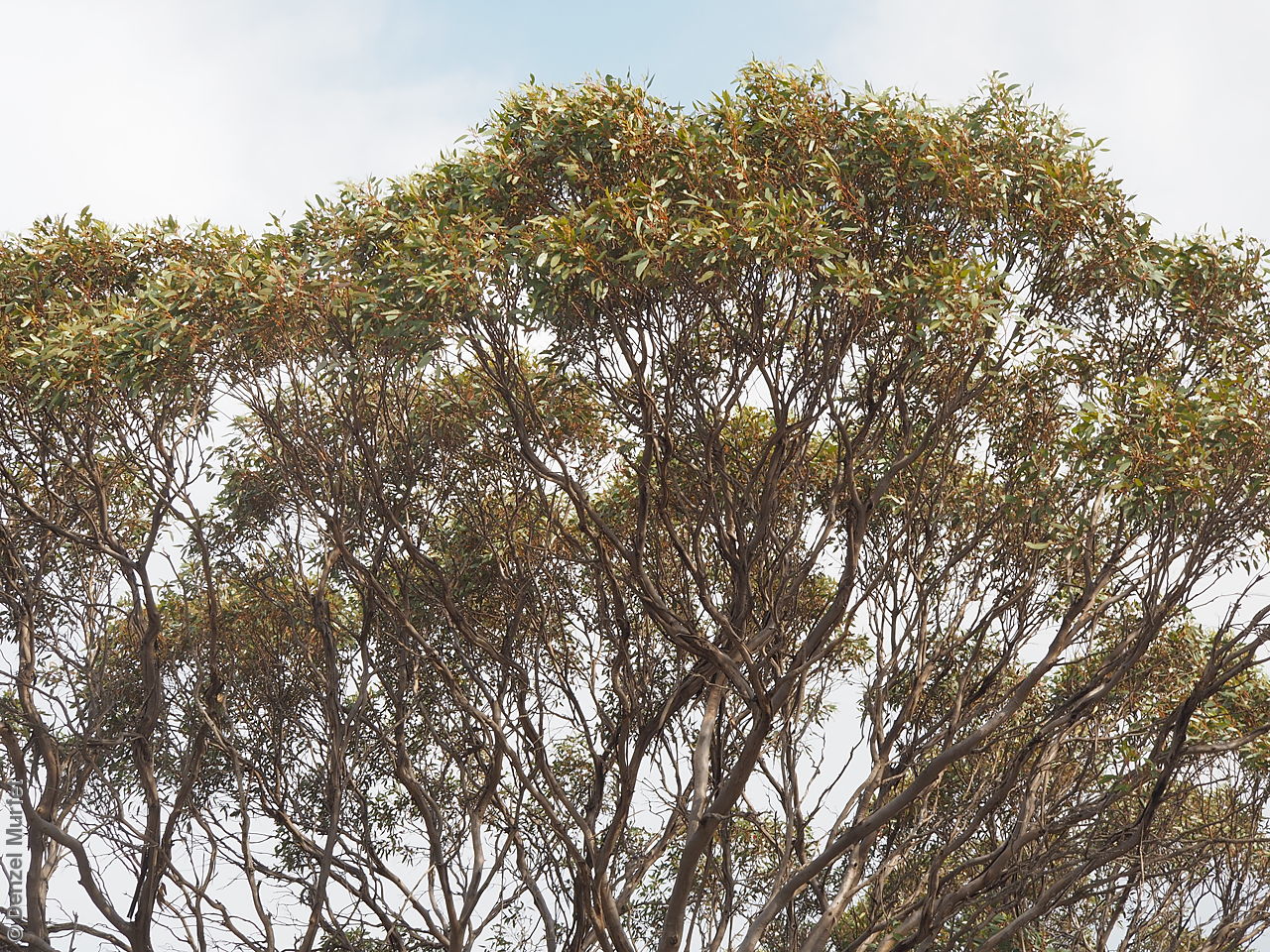
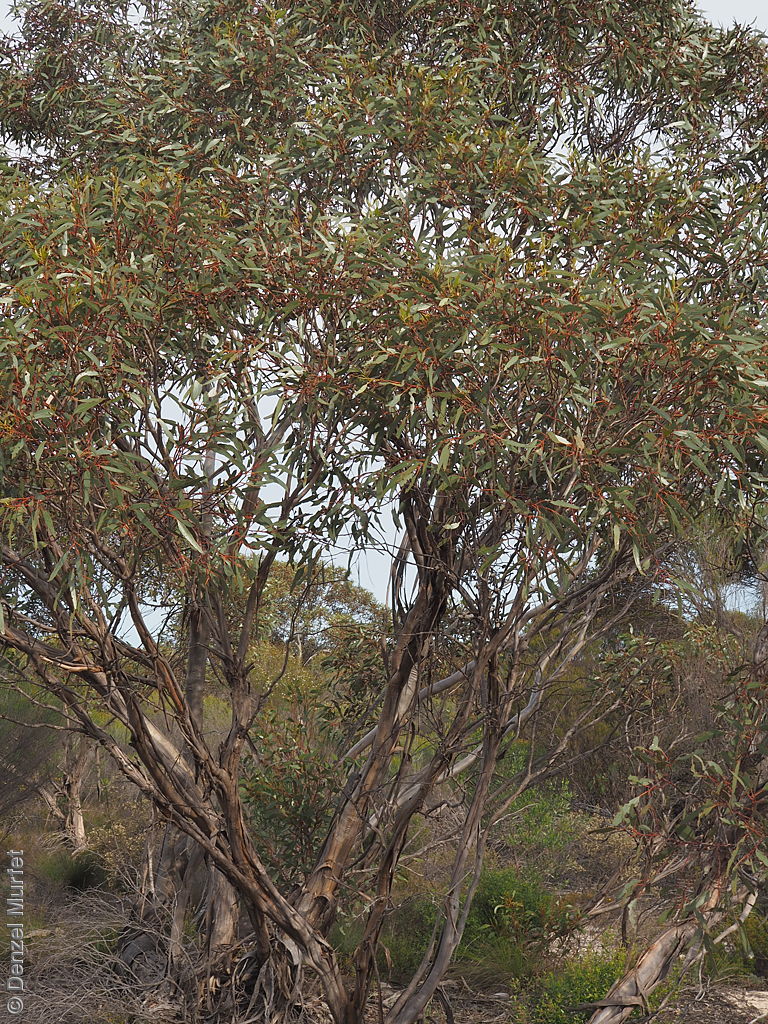
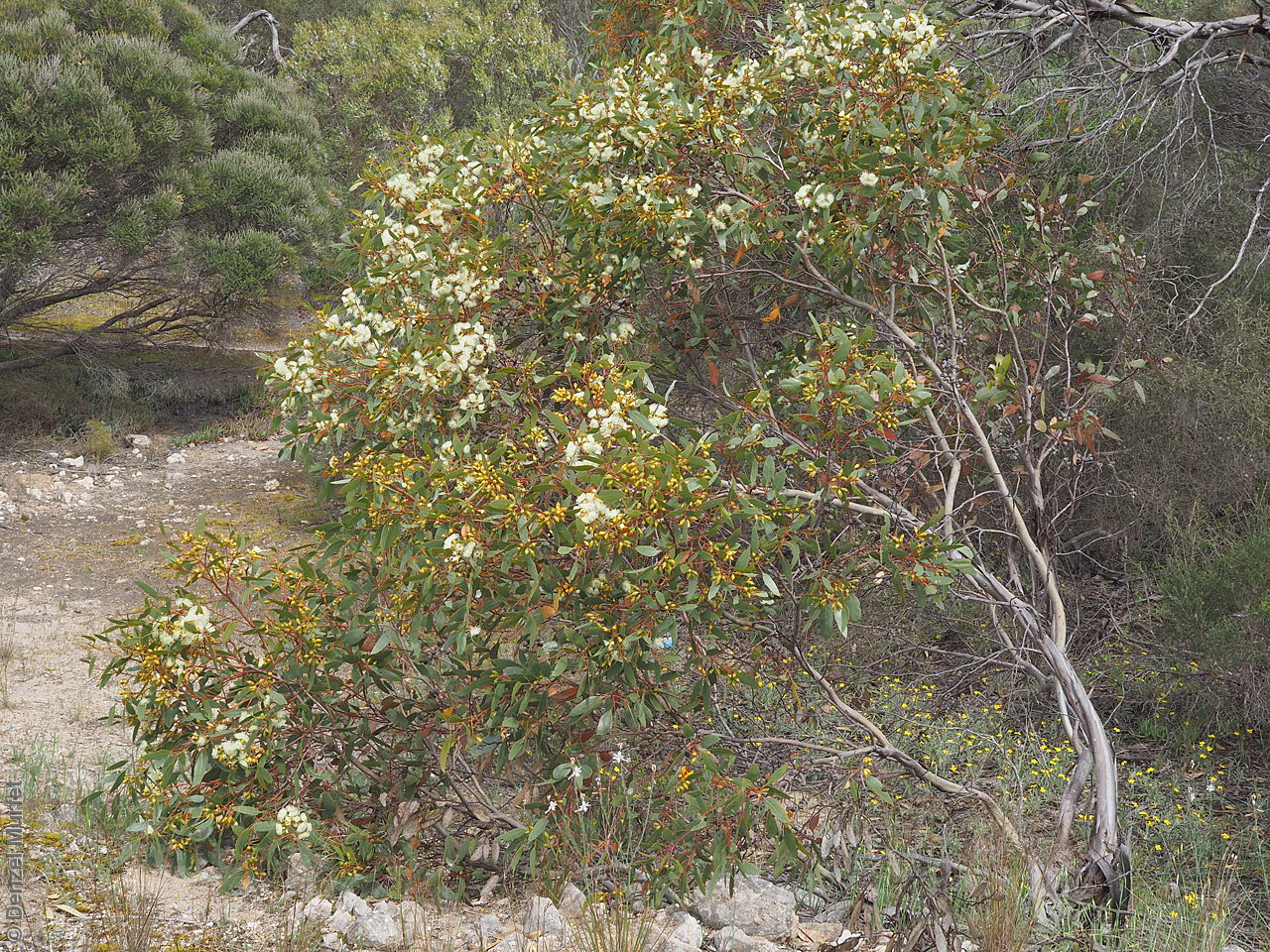
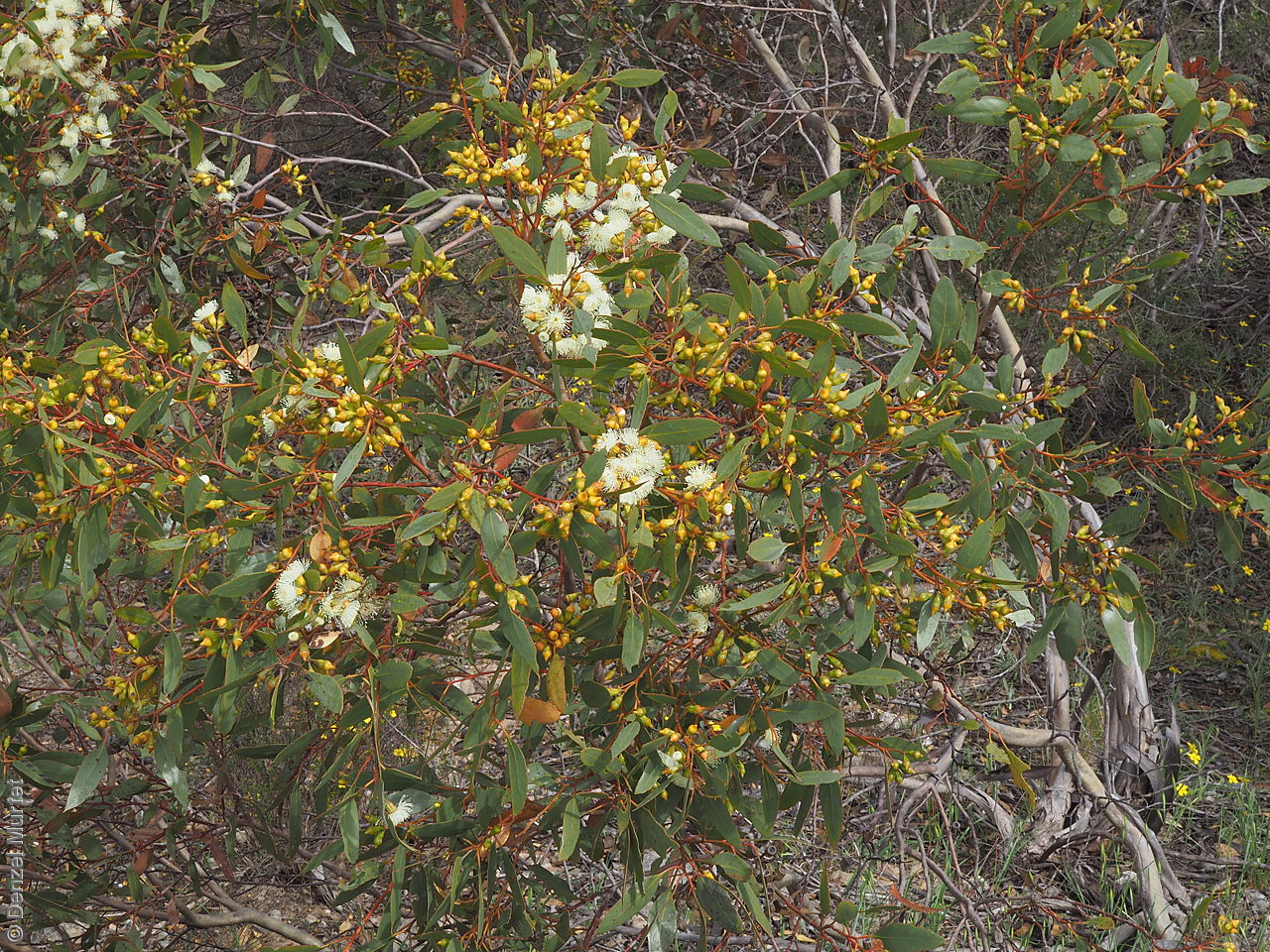
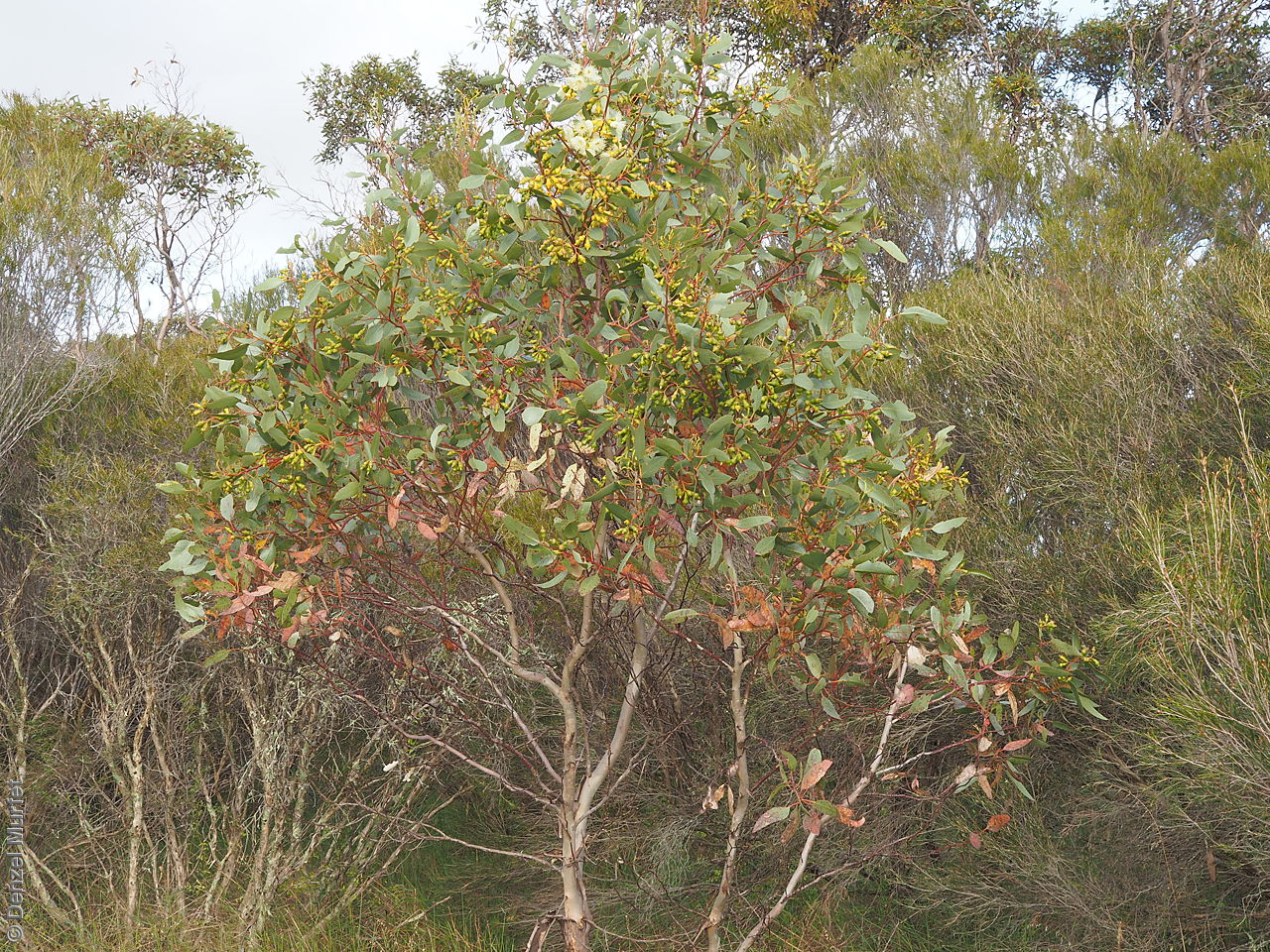
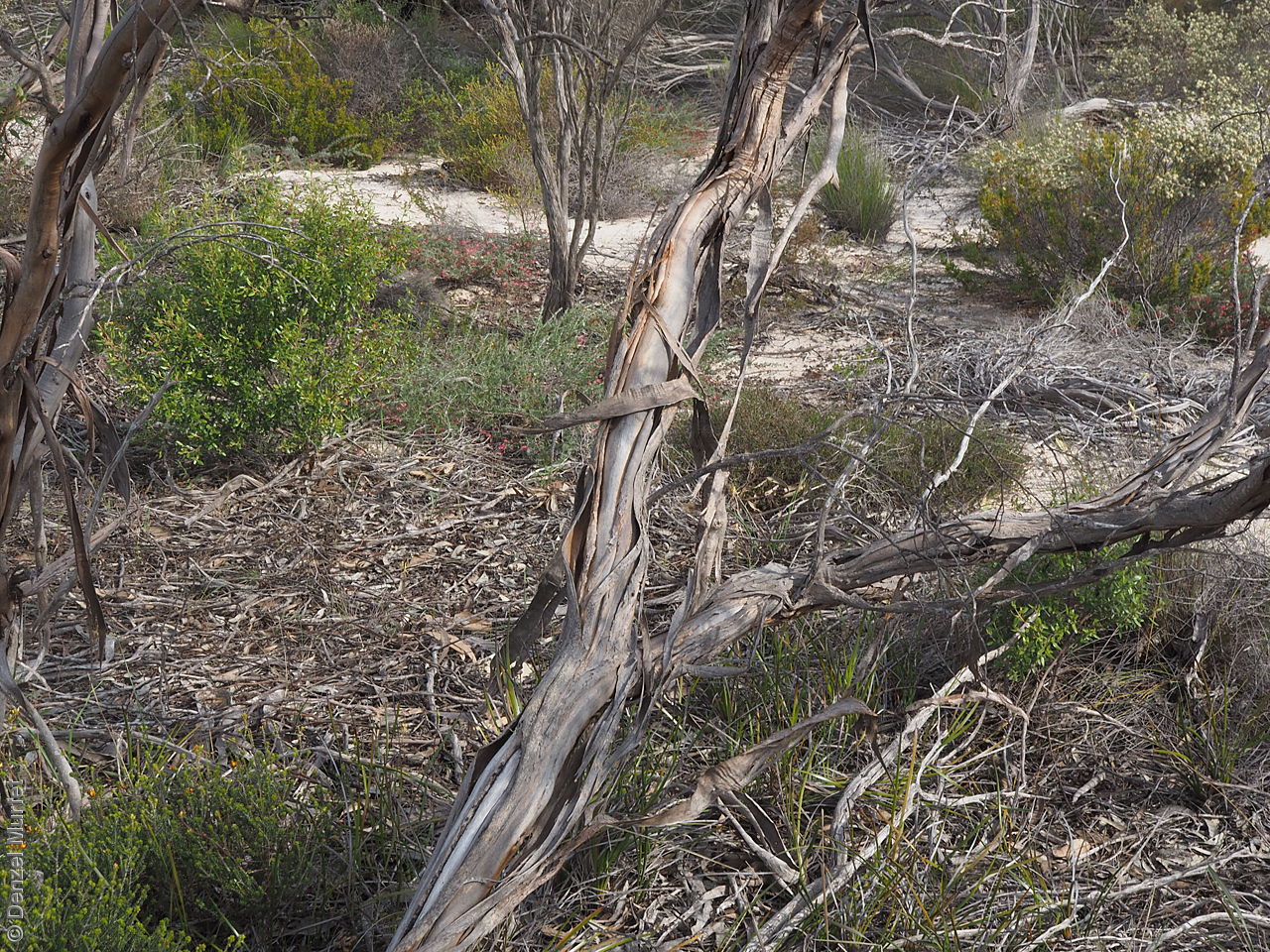
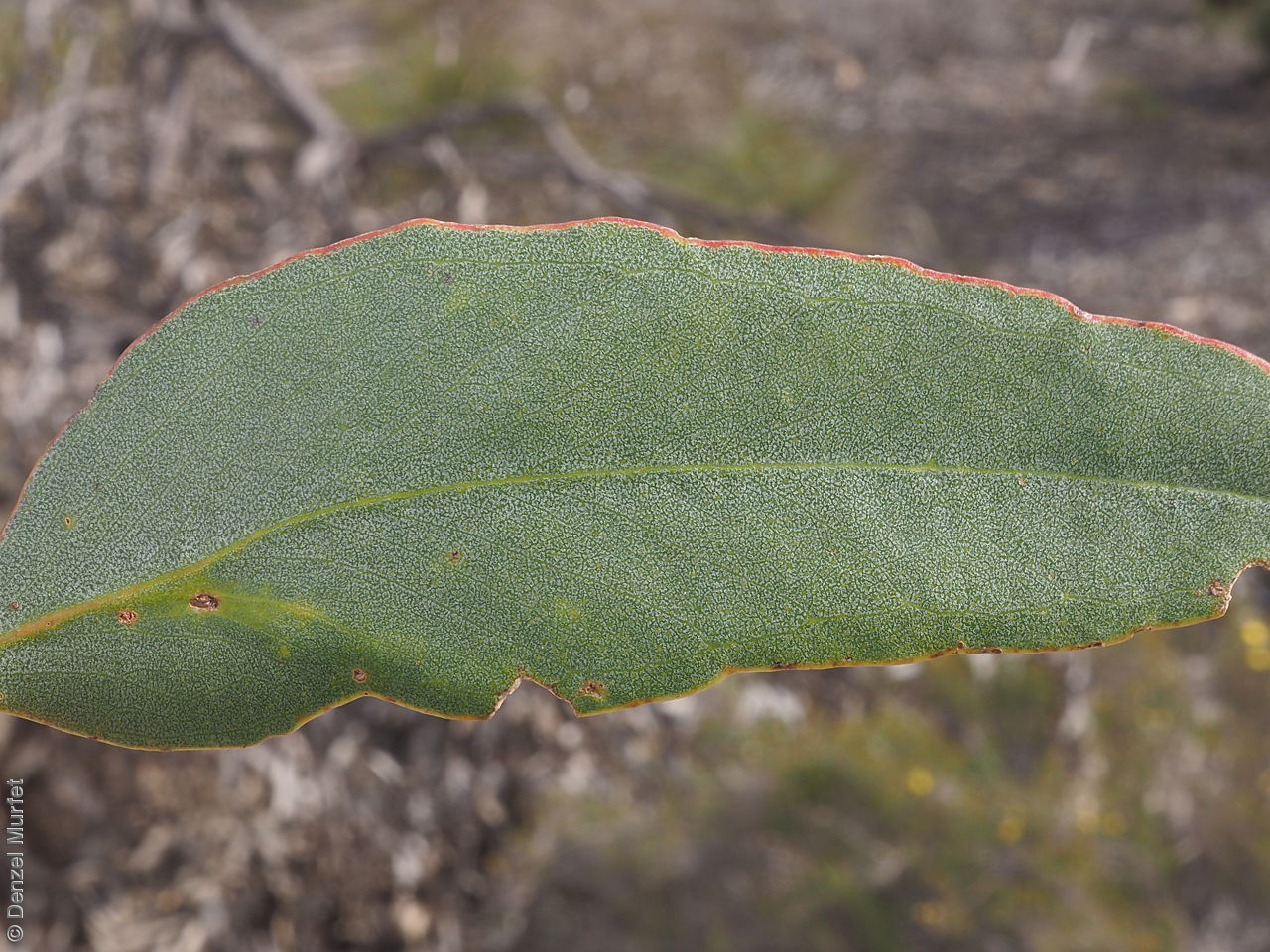
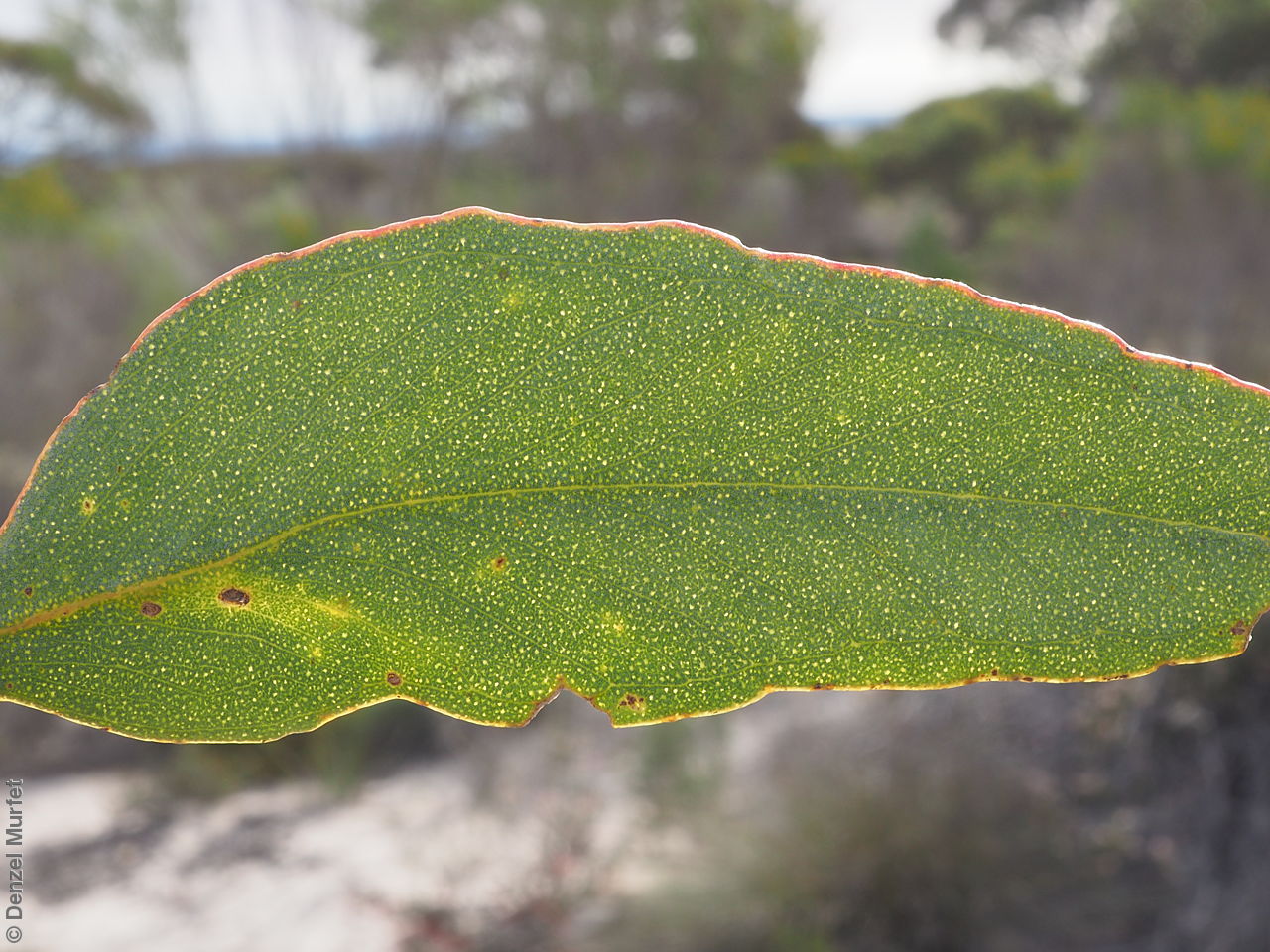
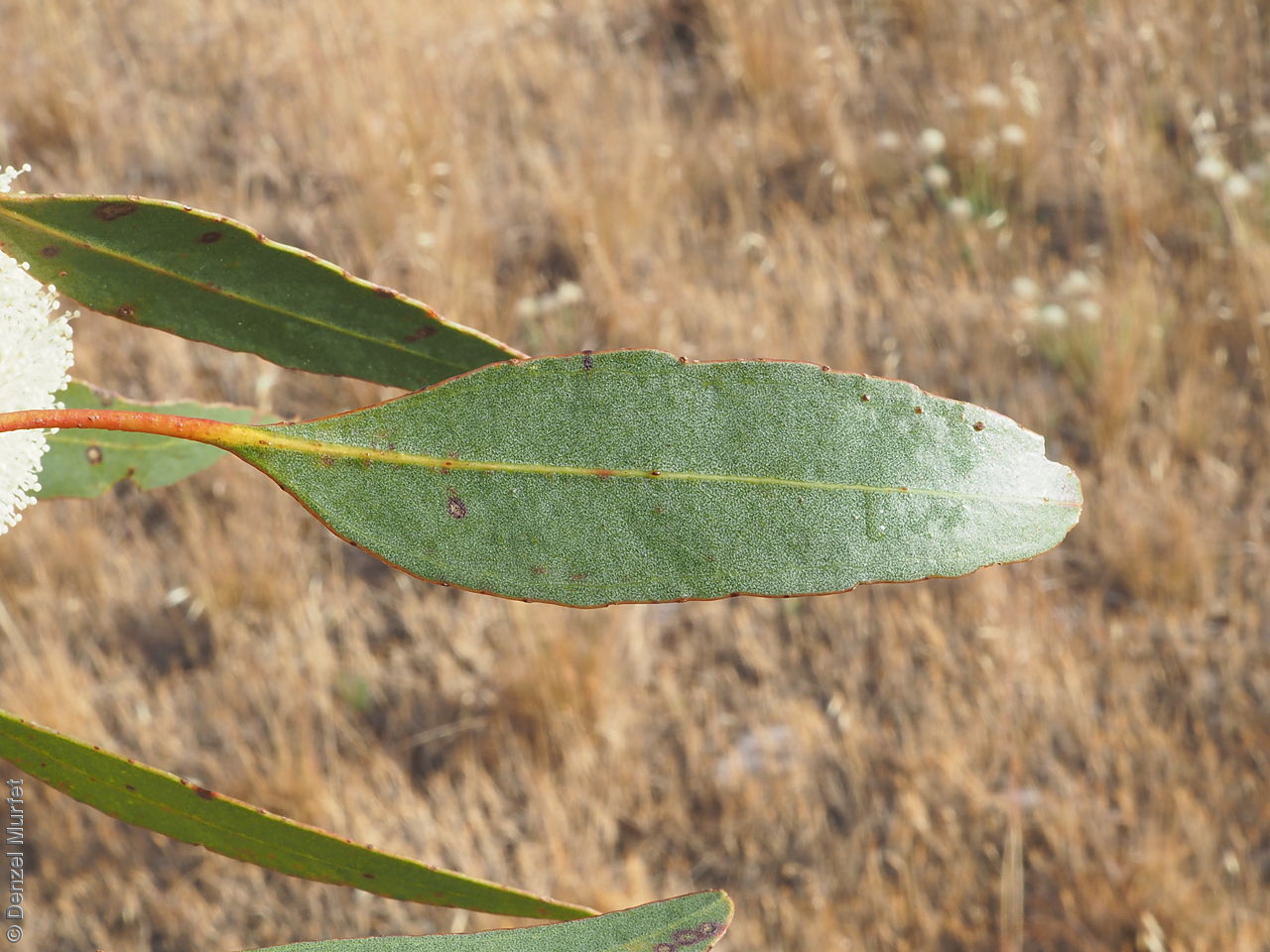
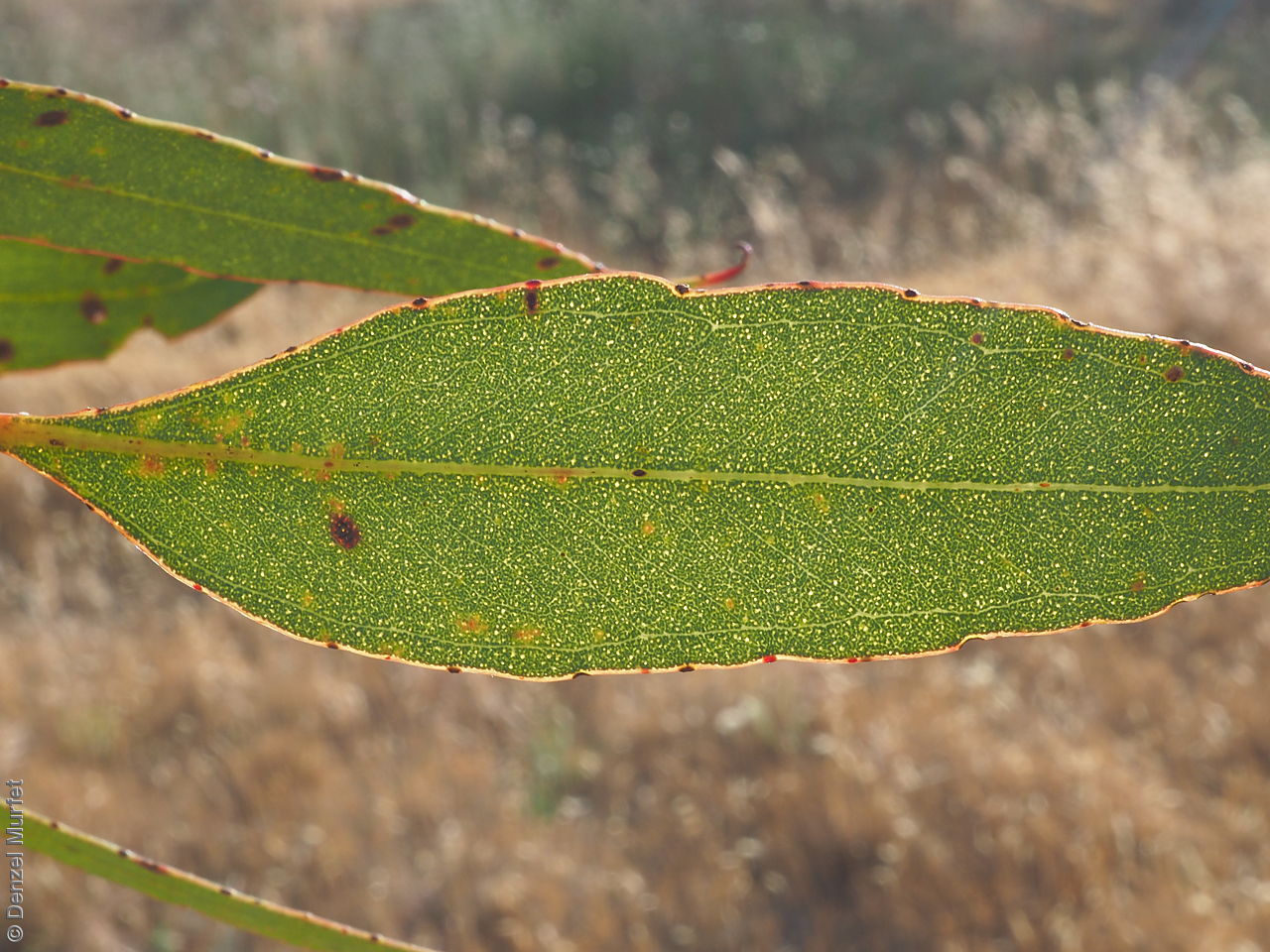
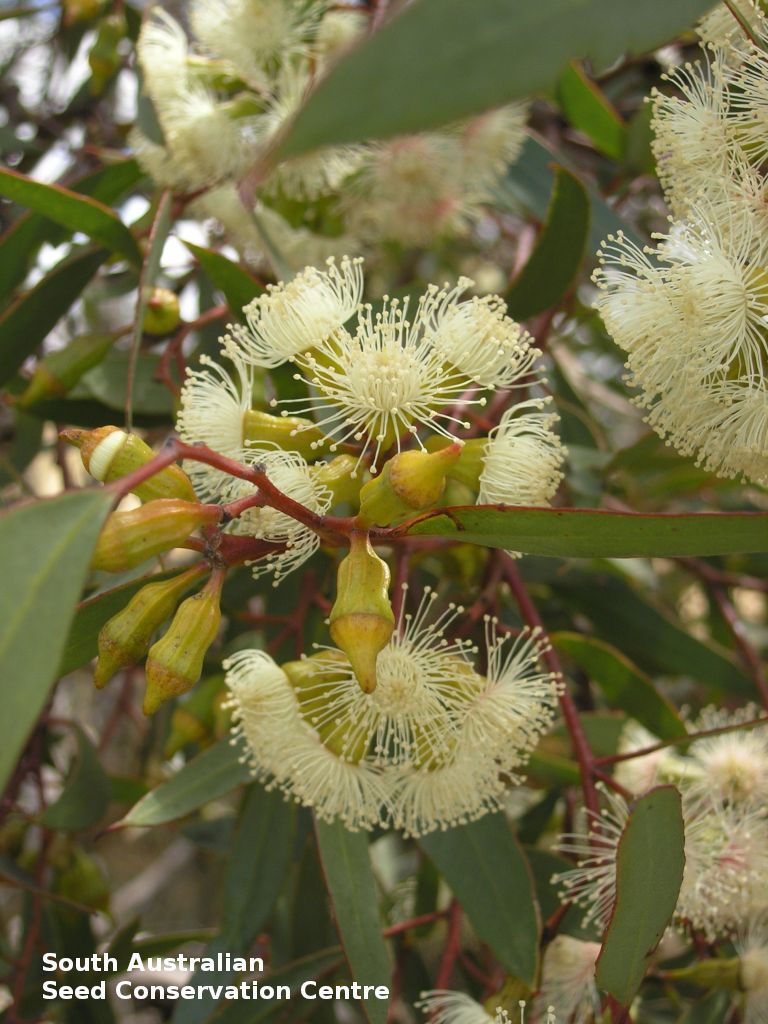
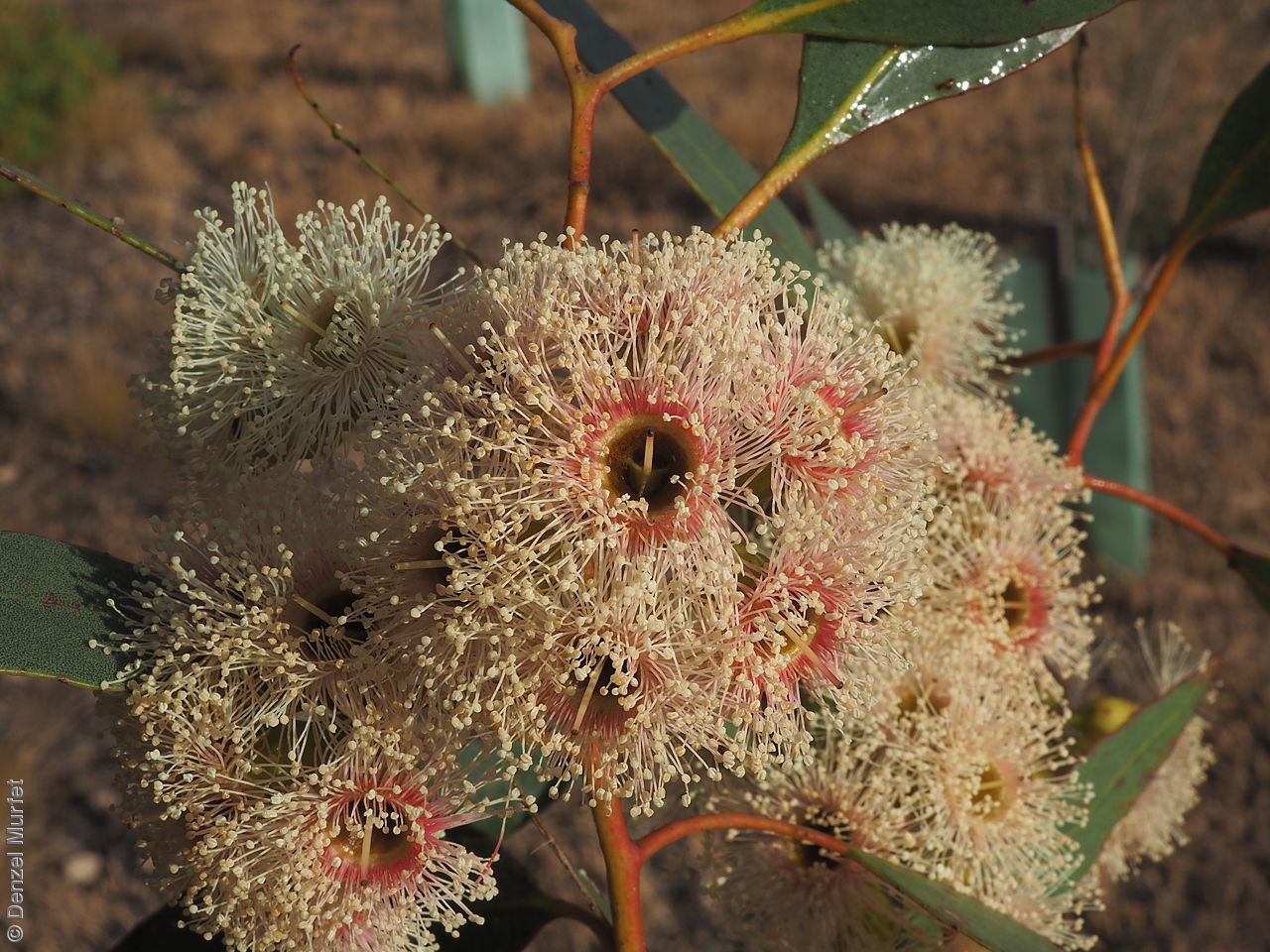
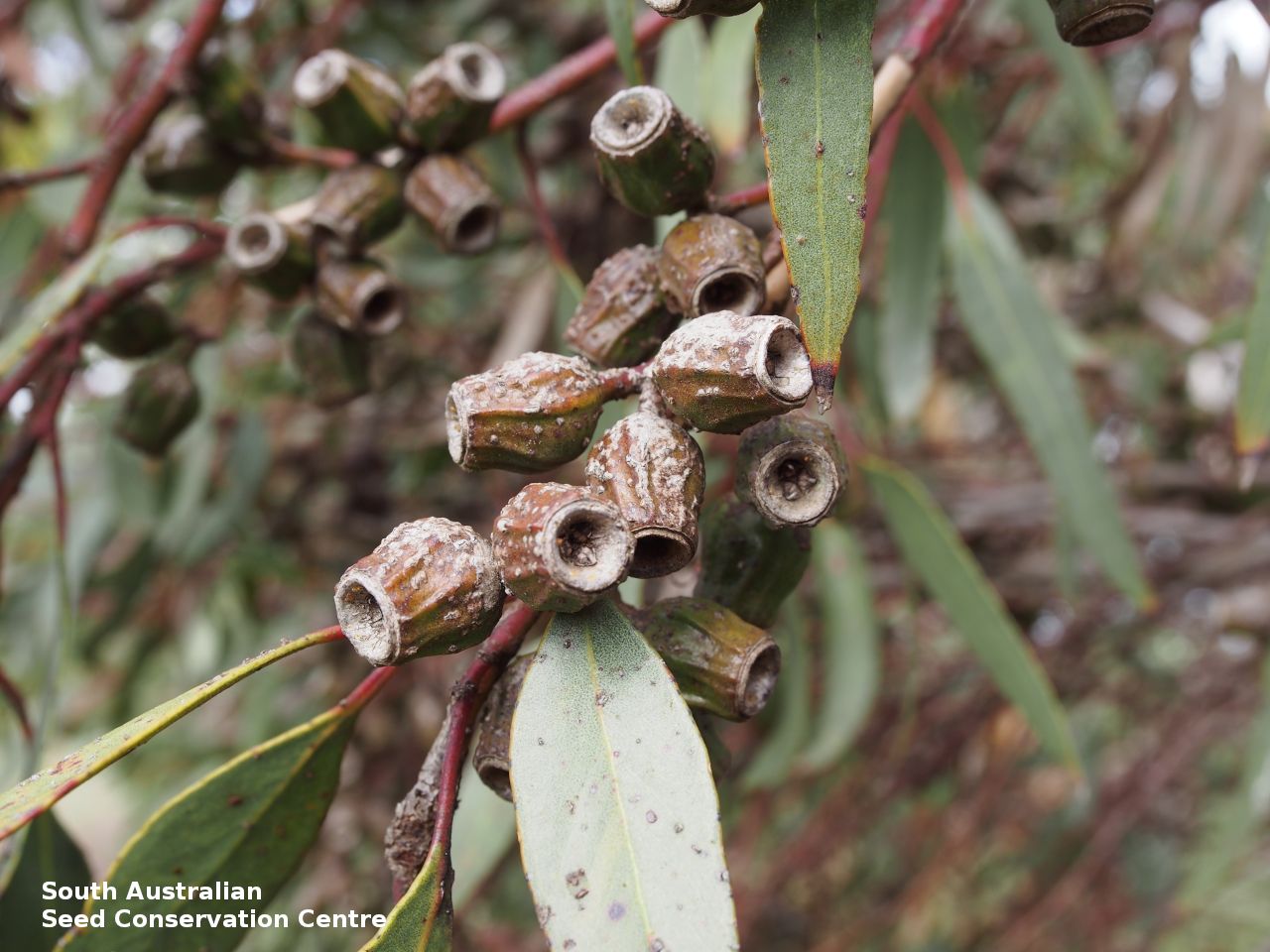
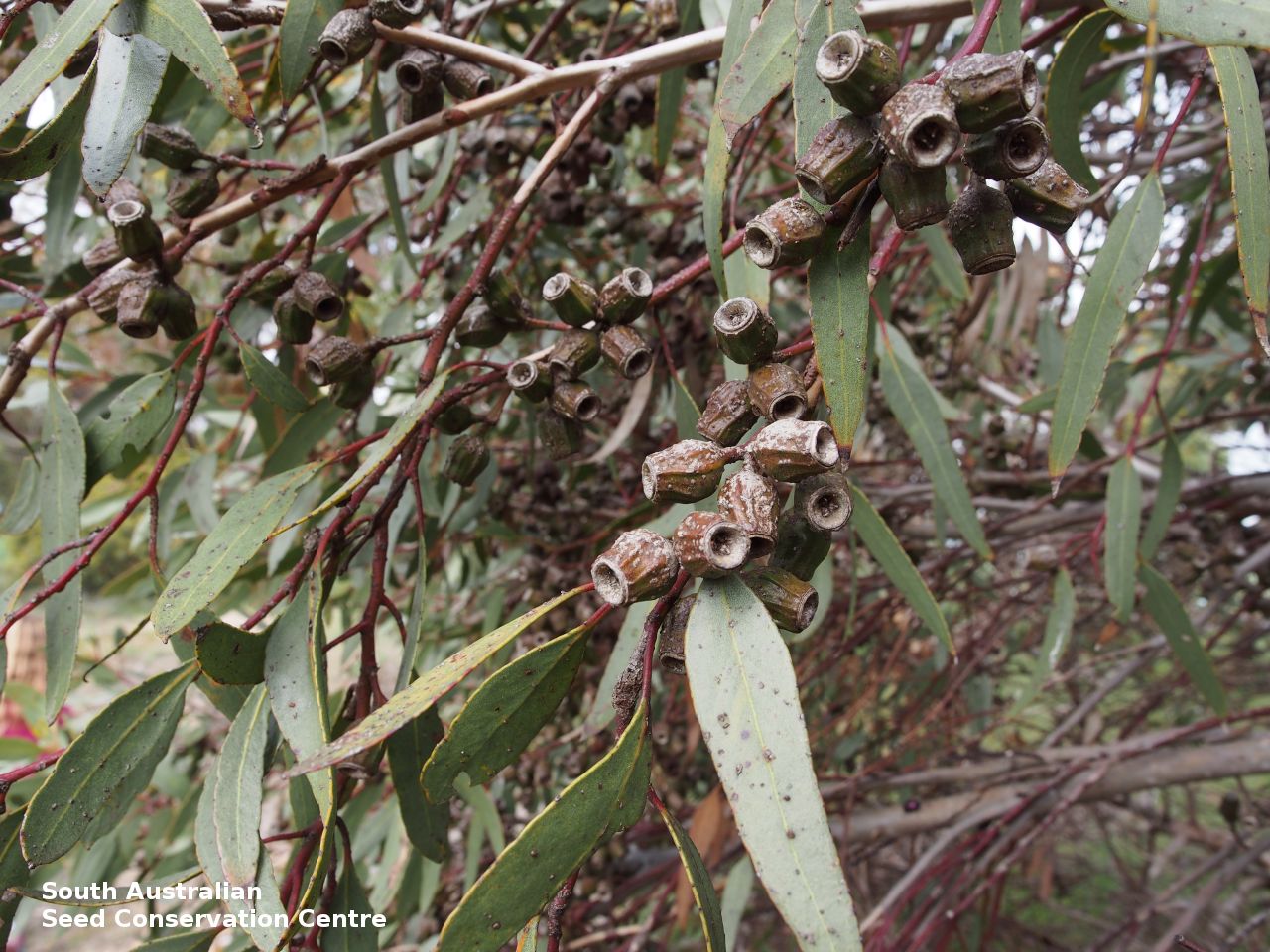
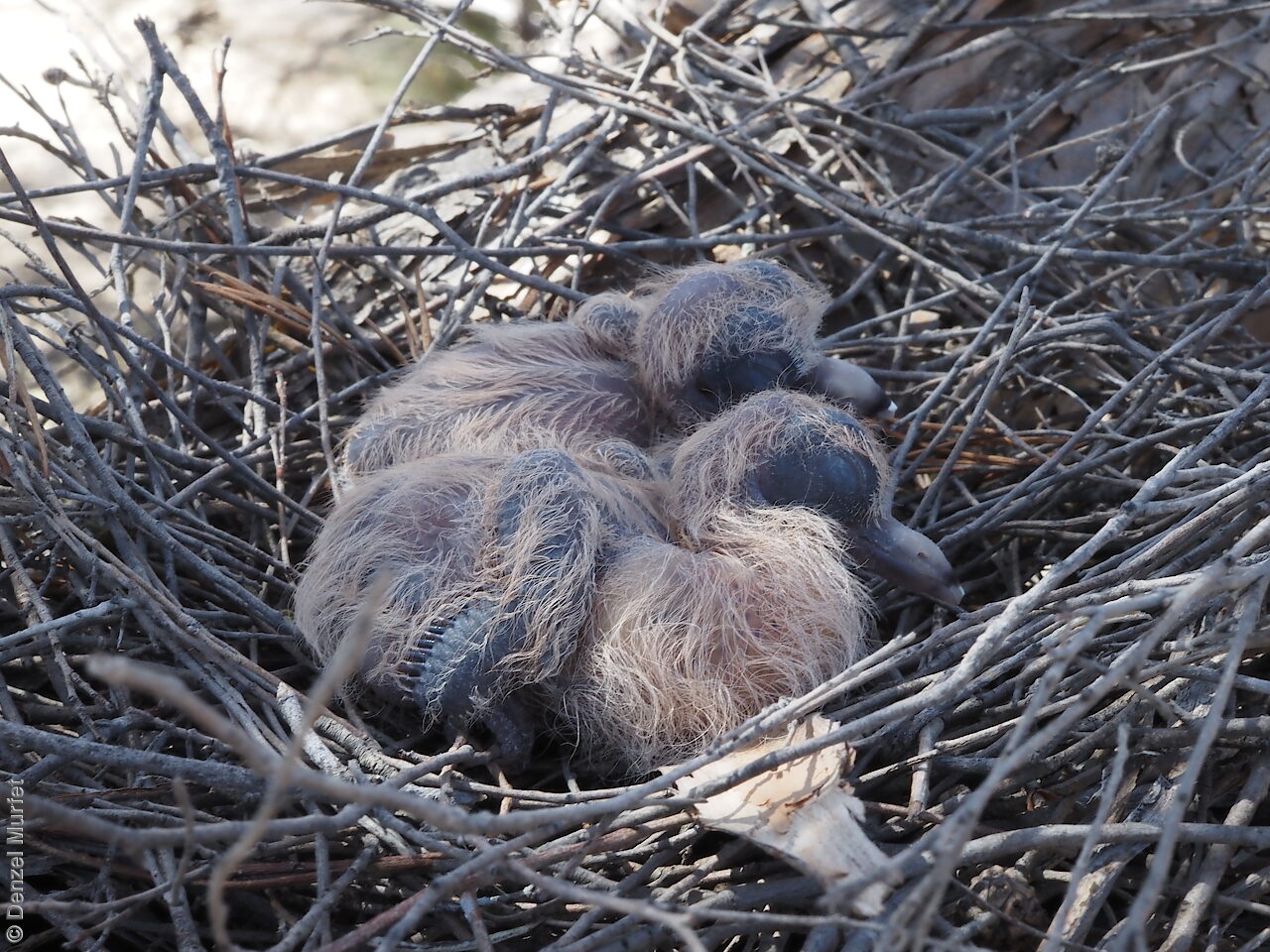
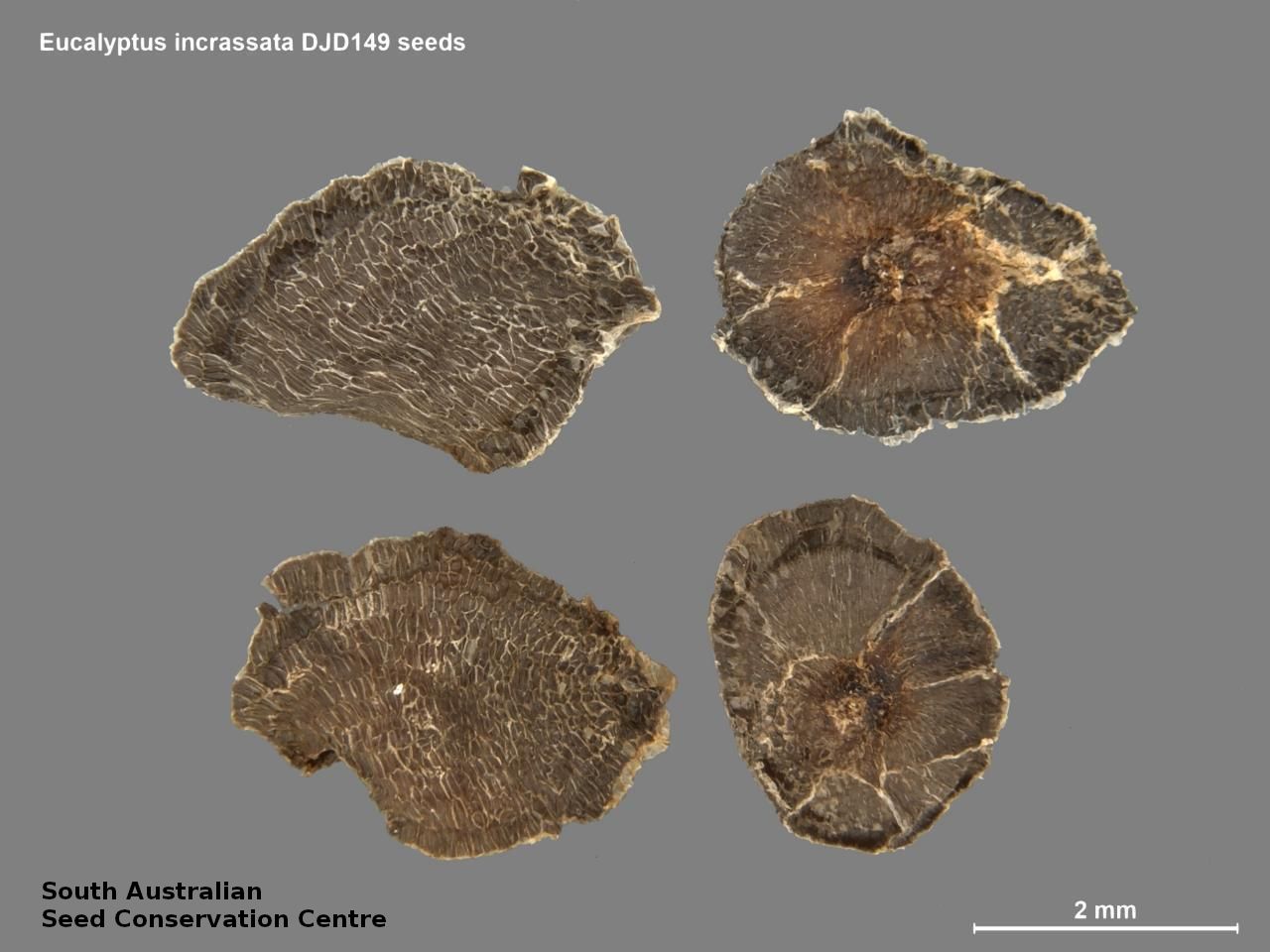

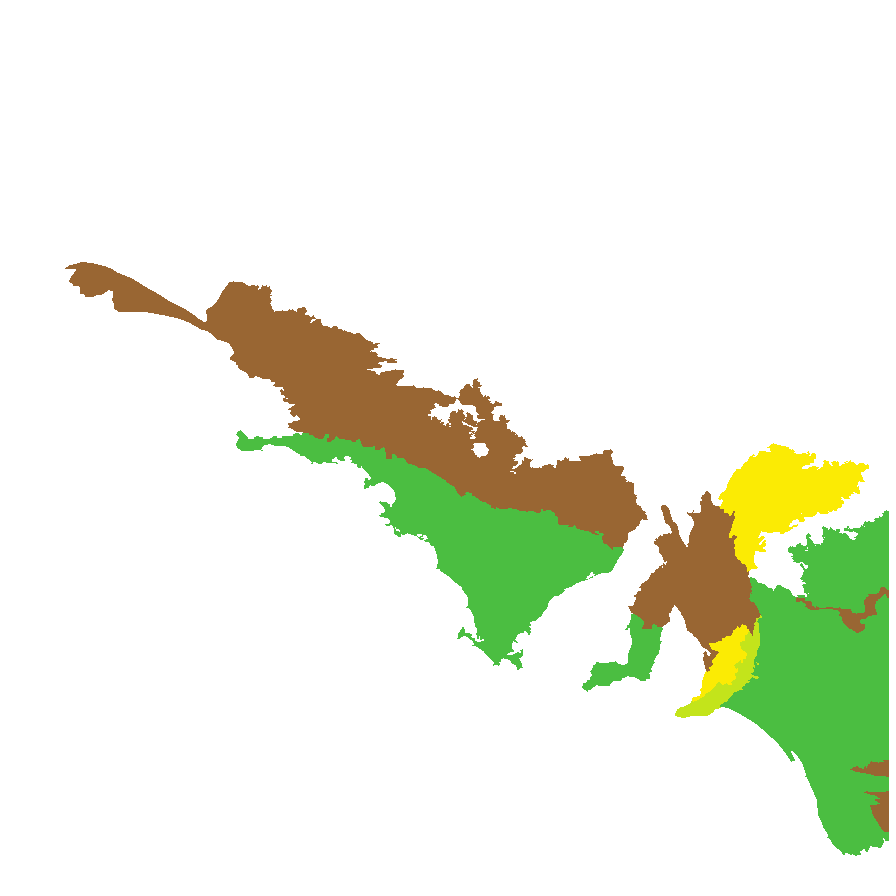
Botanical art
Prior names
Eucalyptus incrassata ssp. costata
Eucalyptus incrassata var. angulosa, partly
Eucalyptus costata ssp. murrayana
Eucalyptus incrassata var. costata
Eucalyptus costata
Common names
Yellow Mallee
Ridge-fruited Mallee
Etymology
Eucalyptus from the Greek 'eu' meaning well and 'calyptos' meaning covered; alluding to the cap or lid which covers the stamens in the bud. Incrassata from the Latin 'incrassatus' meaning thickened; referring to the thick leaves.
Distribution and status
Found in the southern part of South Australia, growing on well-drained sandy soils usually overlaying limestone in mallee shrublands. Also found in Western Australia, New South Wales and Victoria. Native. Common in South Australia. Common in the other states.
Herbarium regions: Eyre Peninsula, Northern Lofty, Murray, Yorke Peninsula, Southern Lofty, South Eastern
NRM regions: Adelaide and Mount Lofty Ranges, Eyre Peninsula, Northern and Yorke, South Australian Murray-Darling Basin, South East
AVH map: SA distribution map (external link)
Plant description
Multi- or single-stemmed trees to 5 m high with smooth, grey or grey-brown bark, shedding in strips to reveal a paler layer and rough bark at the base. Juvenile leaves ovate to lanceolate, dull, blue-green soon becoming glossy, green. Adult leaves to 150 mm long and 30 mm wide, alternate, lanceolate, glossy, thick, palish-green. Flowers in groups of 3-7 in the axils of the leaves. Buds to 23 mm long and 11 mm wide, on stalk to 7 mm long, ellipsoid or narrowly obovoid to urn-shaped, faintly striate to ridged, bud-cap cone-shape, equal in length to the base. Flowers cream sometimes aging to pink appearing in winter to summer. Fruits are thick-walled, barrel-shaped to urn-shape fruit to 18 mm long and 12 mm wide, faintly striate to strongly ribbed, with narrow rim and descending disk, valves 3 or 4 level of or below the rim. Seeds are dark brown to black, irregularly pyramidal seed to 4 mm long and 2.3 mm wide. Seed embryo type is folded.
Seed collection and propagation
Collect seeds between January and December. Collect mature fruits that are dark and hard (difficult to break with a finger nail) with the valves un-open any time of year. Leave the fruits in a breathable container in a dry room for at least a week. This allows the valves on the fruit to open and release the seeds. Separate the seeds by placing all the materials into a bucket and shaking it to dislodge the seeds. Pass the material through a sieve to separate the unwanted material. The finer material will contain both seeds (soft) and frass (hard) usually distinguishable from each other but can be very similar in shape and colour. With finer sieves, the seeds can be separated from the frass but this is not essential for storage or propagation. Store the seeds with a desiccant such as dried silica beads or dry rice, in an air tight container in a cool and dry place. From three collections, the seed viability were average to high, ranging from 60% to 100%. Seeds are non-dormant, viable seed should germinate readily.
| Location | No. of seeds (weight grams) | Number of plants | Date collected | Collection number Collection location | Date stored | % Viability | Storage temperature |
|---|---|---|---|---|---|---|---|
| BGA | 1,300 (1.85 g) | 5 | 5-Nov-2003 | PJA40 Murray | 1-Sep-2004 | 100% | +5°C, -18°C |
| BGA MSB | 16,500 (50.5 g) 16,500 (50.5 g) | 40 | 20-Oct-2005 | DJD149 Murray | 8-Aug-2006 | 95% | -18°C |
| BGA | 1,500 (6.1 g) | 1 | 16-Sep-2003 | PJA23 Murray | 14-Aug-2006 | -18°C | |
| BGA | 480 (0.48 g) | 1 | 24-Sep-2003 | PJA31 Eyre Peninsula | 14-Aug-2006 | -18°C |
Number of plants: This is the number of plants from which the seeds were collected.
Collection location: The Herbarium of South Australia's region name.
% Viability: Percentage of filled healthy seeds determined by a cut test or x-ray.